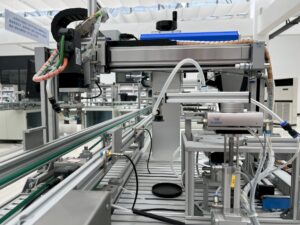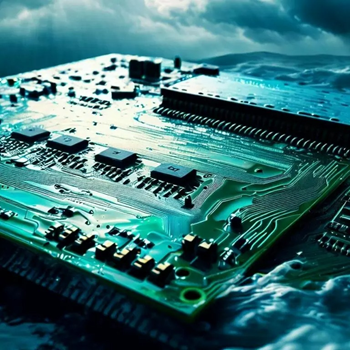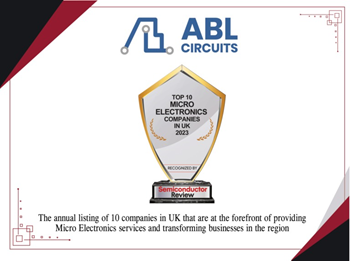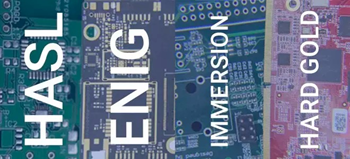PCBs in Industrial Automation and Control Systems
Industrial automation and control systems (IACS) play a key role in the manufacturing and management of printed circuit boards (PCBs). IACSs ensure processes are efficient and the quality is high and consistent. Without PCBs, ICASs simply wouldn’t be as precise, flexible and sustainable. In this post, we’re going to explore the world of PCBs in industrial automation and control systems, including the types of IACSs, how they ensure quality and what’s in store for them in the future. Understanding IACS IACSs play a crucial role in establishing manufacturing processes, as they’re responsible for automating tasks, monitoring operations and performance, and ensuring efficiency. They’re also partly responsible for ensuring processes are safe and reliable for employees. PCBs are a major part of IACSs. Without a PCB, most electronic devices and control systems couldn’t operate, which of course includes IACSs. As you no doubt already know, PCBs connect and integrate with components such as sensors, communication modules and microcontrollers. In IACSs, this ensures the control and management of processes. PCBs are small, durable, reliable, scalable and can integrate with a wide variety of components. This makes them ideal for use in IACSs of all types. The different types of industrial control systems There are many different classes of industrial control systems which have different functions and complexities. • Supervisory Control and Data Acquisition (SCADA) System: SCADA systems collate data to help with the real-time remote monitoring of industrial processes. • Safety Instrumented System (SIS): SISs ensure the safety of staff and equipment in industrial environments and help with emergency responses. • Distributed Control System (DCS): DCSs involve multiple controllers within a facility that each handles its own task. It allows for complex and high-speed data processing. • Basic Process Control System (BPCS): BPCSs control the likes of temperature, pressure and flow in industrial facilities. • Programmable Logic Controller (PLC): PLCs are used to control machinery and production lines and other areas of industrial automation. • Human-Machine Interface (HMI) Systems: HMIs produce real-time data and control options so operators can manage processes efficiently. • Industrial Internet of Things (IIoT) Systems: IIoT systems collate data from multiple sources into a central database that can be accessed from anywhere. • Basic Process Control System (BPCS): BPCSs control the likes of temperature, pressure and flow in industrial facilities. • Motion control system: Motion control systems are used in robotics to ensure precise and consistent operations. • Building Automation System (BAS): BASs control the heating, ventilation and air conditions (HVAC), as well as lighting and security, of commercial buildings. Customisation in PCBs: Meeting the unique needs of IACSs The thing about IACSs is that there is no one-size-fits-all approach. Every organisation needs an IACS to meet a different set of requirements and needs, which is why most PCBs built for IACSs are custom. The reasons why organisations have such varied requirements can be due to different: • Processes • Complexities • Applications • Safety requirements • Compliance needs • Environmental factors • Scalability requirements • Integrations • Data and reporting needs This is completely unlike other industries. For example, PCBs in aerospace tend to have similar requirements and standards, while those used in IACS have to fit a very specific brief. These customisations mean that IACSs can be adaptable, efficient and effective in a fast-paced and ever-evolving industry. Sustainability and PCBs: Eco-friendly solutions for industrial automation Making sure the PCB manufacturing process is sustainable and eco-friendly is important for reducing the environmental impact made at every stage. This starts from the moment the PCB is designed through to how it’s disposed of at the end of its life. Below are some of the steps every organisation should take to reduce their environmental impact when it comes to PCBs for IACSs. • Source local PCB manufacturers to reduce the carbon footprint of the manufacturing process, including delivery. Local PCB manufacturers can also reduce turnaround times. • Partner with organisations that prioritise utilising green initiatives and practices. • PCBs should be designed with efficiency, space-saving and waste-reduction in mind. • Materials that are environmentally friendly and responsibly sourced are imperative. They should also be recyclable. • Manufacturing should be energy efficient, including reducing energy consumption when possible and using renewable energy. • Steps should be taken to reduce waste, recycle effectively and properly manage and dispose of hazardous materials to ensure compliance with regulations. • Reduce the reliance on the use of hazardous materials and source eco-friendly alternatives where possible. • Invest in new technologies and research and development to improve current processes. • Offer training to employees across the organisation on contributing to sustainability. Quality assurance: Ensuring reliability and longevity in IACSs’ PCBs As well as ensuring they’re as eco-friendly as possible, it’s also important that PCBs built for IACSs are reliable and durable so they’re as efficient and effective for as long as possible. Not only this, but PCBs with good longevity don’t need to be disposed of as regularly, which further improves their eco-friendly status. At ABL Circuits, quality and reliability always come first. Our processes, materials and practices ensure optimal performance and precision when it comes to PCBs designed and built for IACSs. Below is how we strike a balance to ensure quality, performance, affordability and longevity: • Meticulous design that focuses on efficiency and performance. • The use of materials that are durable and long-lasting, with special attention paid for PCBs used in harsh environments. • PCBs are protected against moisture, dust and other hazards that will impact their durability. • Integrate components that have an above optimal mean time between failures (MTBF). • Thermal management solutions to increase the lifespan of components. • A dedication to rigorous testing and quality assurance. The future of PCBs in IACS: Trends to watch PCBs, like IACS, are fast-changing industries that are driven by advancements in technology and the introduction of new processes. Here are the top three trends we expect to make waves in the near future, and what your business can do to prepare for them. 1. Industry 4.0 Industry 4.0 involves the integration of digital tech, such as internet of things (IoT), artificial intelligence (AI), cloud computing and data analytics. It will improve reaction times and the ability to make data-driven decisions in real-time, as well as allow for more automation. Ensure your business has the relevant infrastructure in place to collect and analyse data, and be open to AI being a tool you can use to improve efficiency. With this, you also need to have sufficient cybersecurity processes in place 2. Edge computing Edge computing is fast becoming more important as it allows operators to monitor and control processes in real time thanks to data being processed in proximity to the source. Edge computing requires investment to ensure you have the right hardware in place as well as the relevant networking and communication infrastructure. 3. Improved cyber security measures The connectivity of IACSs means there’s an increased threat of a cyber attack. According to a paper published by Lund University, Security for IACS in the past was neglected, in recent years security has obtained a lot of attention in the research community and indeed within the industry. This highlights that cyber security and the protection of systems and data should be a key focus. This is not only from a compliance perspective, but ensures you value your customers and their data. Make sure you invest in hardware and software, and provide training to your workforce. Conclusion: The symbiotic relationship between PCB suppliers and the IACS industry Without PCBs, the IACS industry couldn’t exist and manufacturing wouldn’t be as productive and efficient as it currently is. With such a vast array of requirements, only expert and experienced PCB designers and manufacturers can meet the needs of those looking for custom PCBs for IACSs. At ABL Circuits, we pride ourselves on being experts in PCB design. We listen to what you need and take a methodical approach to manufacturing high-quality, durable boards to suit your needs. Get a free trial today and enhance your product with ABL Circuits.Visit the ABL Circuits Ltd website for more information on PCBs in Industrial Automation and Control Systems





